Want to know how to create a lead magnet in WordPress?
A lead magnet is a valuable resource you offer for free in exchange for someone’s contact information, usually their email address. Think ebooks, checklists, templates, free trials – anything your audience would find helpful.
In this step-by-step guide, I’ll show you exactly how to create a lead magnet in WordPress. I’ll cover everything from brainstorming ideas to delivering your finished product. By the end, you’ll have a powerful way to grow your email list and engage your audience.
What is a Lead Magnet
A lead magnet is an irresistible bribe (in a good way). It’s something valuable you offer to website visitors in exchange for their contact information. This usually involves an email signup form so you can stay connected.
Lead magnets work like a trade: subscribers get a useful resource like an ebook, checklist, template, special offers, or even access to a webinar. In return, you get their email address, which lets you nurture that relationship and turn them into customers.
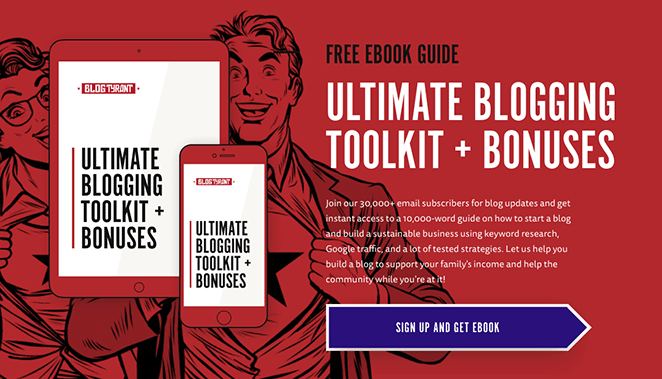
Why Use Lead Magnets in WordPress?
Good lead magnets are essential for any serious WordPress website owner. They’re a proven way to grow your email list and generate more leads, which translates to more potential customers.
Research confirms the power of free. As one study puts it, “Across a wide range of situations, we find that the attractiveness of an offer increases significantly when the price is reduced to zero.”
Offering a valuable lead magnet taps into this and makes people more likely to give you their email address. Plus, WordPress makes it incredibly easy to create, manage, and deliver those lead magnets.
How to Create a Lead Magnet That Converts
Ready to start building your own lead magnet? I’ll walk you through the process step-by-step. From brainstorming winning ideas to delivering a top-notch resource, I’ve got you covered every step of the way.
In this guide:
- Step 1. Figure Out Who You're Talking To
- Step 2. Pick a Lead Magnet Your Audience Wants
- Step 3. Create Genuinely Useful Content
- Step 4. Design and Format Your Lead Magnet
- Step 5. Add Your Lead Magnet to WordPress
- Step 6. Build Your Lead Magnet Landing Page
- Step 7. Spread the Word About Your Lead Magnet
- Real-Life Examples of Lead Magnets That Work
Step 1. Figure Out Who You’re Talking To
Before creating your lead magnet, you need to know who you’re making it for. It’s all about your target audience—the ideal customers you want to attract.
Think of it like this: if you’re a fishing expert, you wouldn’t use the same bait for trout and tuna, right? The same goes for lead magnets. To reel in the right people, you need to understand their needs.
What are their biggest pain points? What kind of information is genuinely valuable to them?
To learn this information, read industry forums, check out competitor blogs, or send a quick survey to your existing subscribers.
Our guide on creating a survey form in WordPress can help you set one up quickly.
Step 2. Pick a Lead Magnet Your Audience Wants
Now that you know who you’re talking to, let’s figure out what they’ll want in exchange for their email address.
The good news? There are several types of lead magnets to choose from:
- Ebooks and Guides: Dive into a topic your audience desires. For example, if you’re a food blogger, offer a “Beginner’s Guide to Sourdough Baking” or a “30-Day Healthy Meal Plan.”
- Checklists and Worksheets: Give people actionable steps they can use right away. A fitness coach might offer a “Workout Routine Checklist” or a “Goal-Setting Worksheet for Weight Loss.”
- Templates and Toolkits: Provide time-saving solutions. A web designer could offer a “Website Wireframe Template” or a “Social Media Content Calendar.”
- Webinars and Video Series: Share your expertise in a live, engaging format. If you teach photography, host a webinar on “Mastering Portrait Lighting” or create a series on “Editing Photos Like a Pro.”
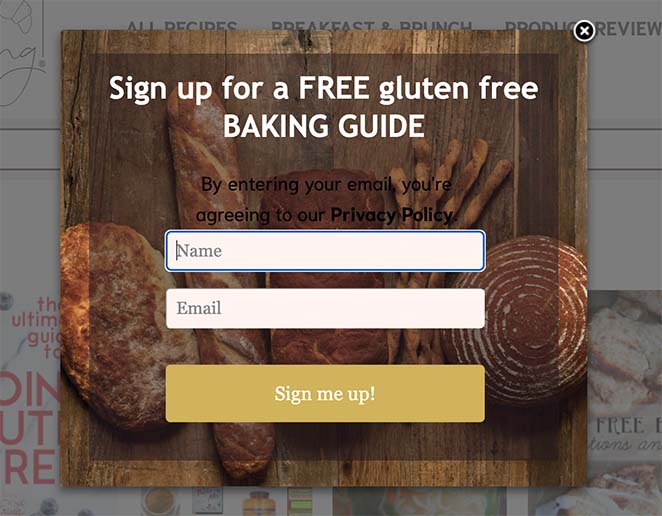
Match the format to your audience and topic. A little planning now means more happy subscribers later.
Step 3. Create Genuinely Useful Content
It’s time to roll up your sleeves and create lead magnets for your business. The key is to make your lead magnet genuinely valuable. Don’t just throw something together—put in the effort to create something your audience will love.
Let’s say you’re passionate about sustainability. Instead of a generic “Going Green” checklist, get specific and provide actionable resources.

Intersectional Environmentalist offers a fantastic “Intersectional Approach to Earth Day Toolkit” packed with guides, social media templates, and even fundraising tips — a true treasure trove of value for their audience.
Start by outlining the key points you want to cover. Then, use a writing tool like Google Docs or Microsoft Word to flesh out your ideas. Do your research, cite credible sources, and, most importantly, make your content clear, engaging, and actionable.
Once you’re happy with the content, proofread carefully (or better yet, have someone else do it). A polished lead magnet shows you care about quality and makes a great first impression.
Step 4. Design and Format Your Lead Magnet
An eye-catching lead magnet is more likely to grab attention and encourage downloads. Would you rather download a bland, text-heavy document or something that looks polished and professional?
Luckily, you don’t need any design experience to make yours. User-friendly tools like Canva and Adobe Express make creating professional graphics and layouts easy, even if you’re a beginner.
Designing Your Lead Magnet in Canva
Here’s a simple guide on using Canva to design your lead magnet:
First, visit the Canva website, and in the search box, type the name of the type of lead magnet you’re creating.
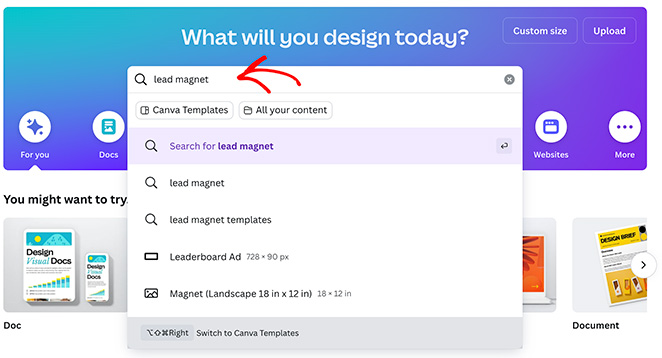
You can even just type “lead magnet,” and you’ll find hundreds of ready-made templates.
Browse the options and pick one that aligns with your brand aesthetic and lead magnet type.
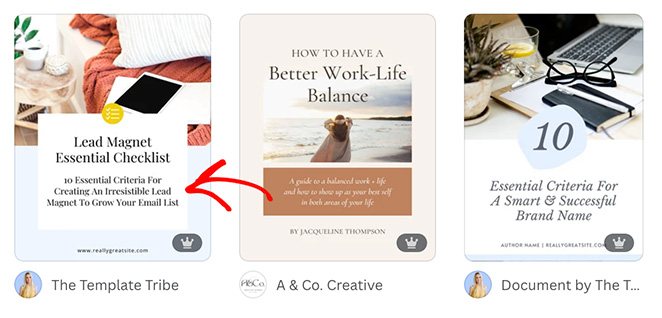
Once you open the template, use Canva’s easy point-and-click interface to swap in your brand colors, fonts, and logo. Experiment with different image styles, icons, and graphics to create a unique look.
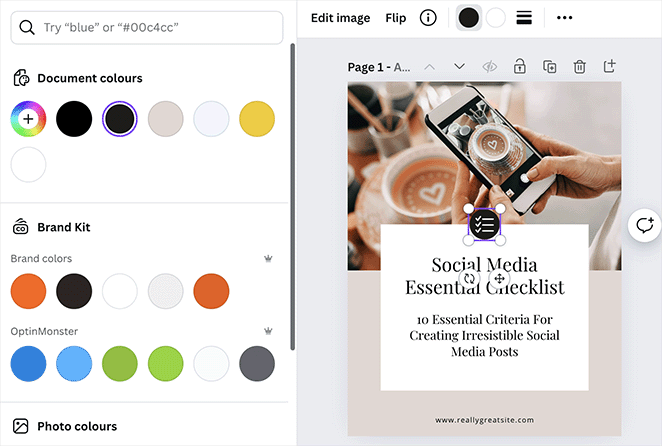
Break up large chunks of text with relevant, high-quality images. Think eye-catching headers, charts to visualize data, or a simple background texture to add interest.
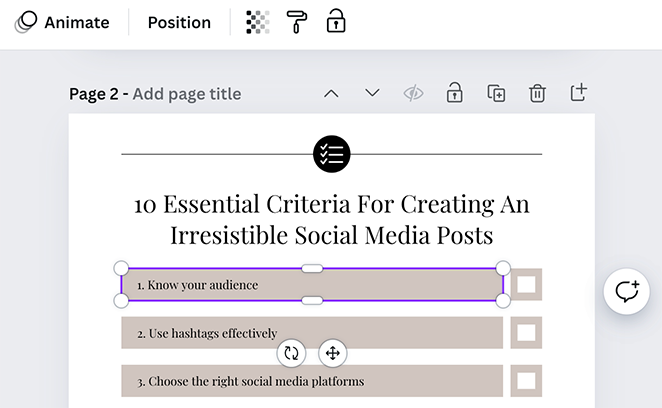
Once you’re happy with your design, download it as a PDF. This format ensures that your formatting stays consistent no matter what device you view it on.
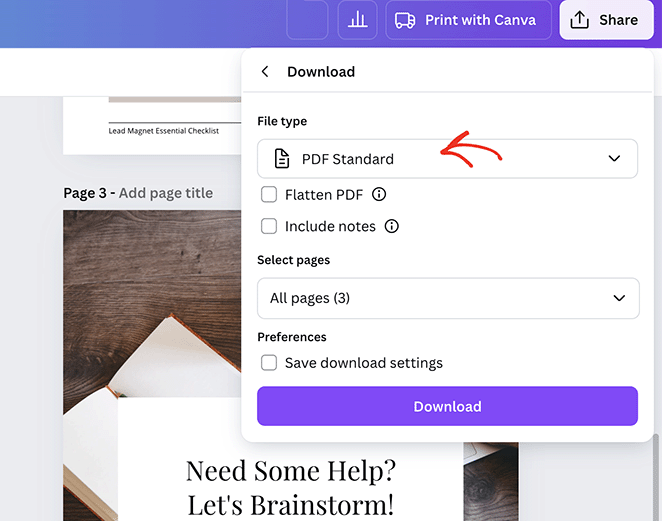
Pro Tip: When it comes to design, less is often more. Keep layouts clean, use whitespace generously, and choose fonts that are both stylish and easy on the eyes.
Step 5. Add Your Lead Magnet to WordPress
Now that you’ve created your lead magnet, let’s make sure people can actually access it. First, let’s add the lead magnet file to your website.
From your WordPress dashboard, navigate to Media » Library and click the “Add New Media File” button.
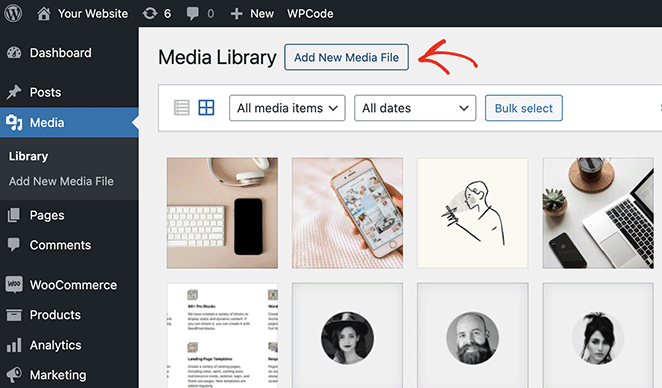
Upload your PDF file and copy the “File URL.” You’ll need this later.
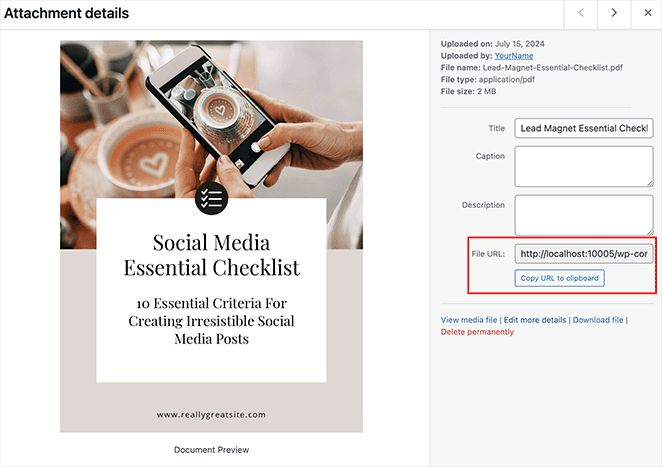
No-Index Your Lead Magnet
I also recommend ensuring people can’t find your PDF in search engines. The last thing you want is for people to be able to access your lead magnet without signing up for it.
One of the best ways to do this is to no-index the media file page with a WordPress SEO plugin. In this example, I’ll use All in One SEO.
From your media file, click the “Edit more details” link.
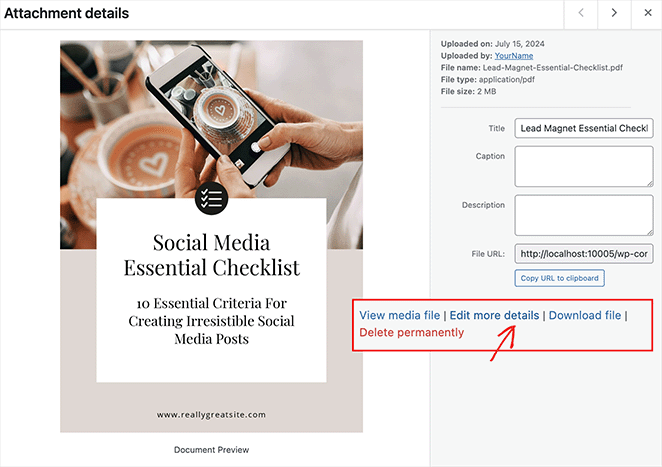
On the next page, scroll to the AIOSEO settings box and click the Advanced tab. Here, un-toggle “Use Default Settings,” click the “No index” checkbox, and then update the page.
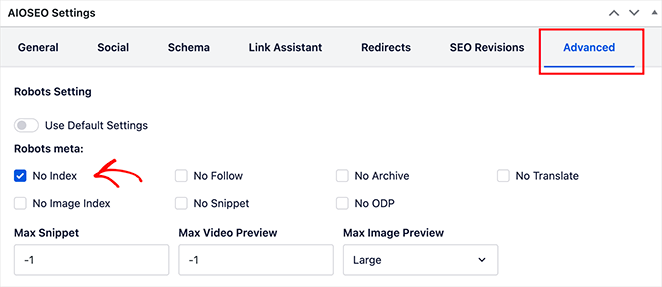
Step 6. Create a Lead Magnet Thank You Page
Now, let’s create a page where users can download your lead magnet after signing up for it.
Instead of showing a generic “thanks for signing up” message, I prefer creating a dedicated “Thank You” page. Not only does it allow users to instantly download their freebie, but it also looks more professional than a random file delivery link.
You can easily create a thank you page using the WordPress block editor. However, for this guide, I’ll use SeedProd, a tool that makes it much easier to get your page looking good.
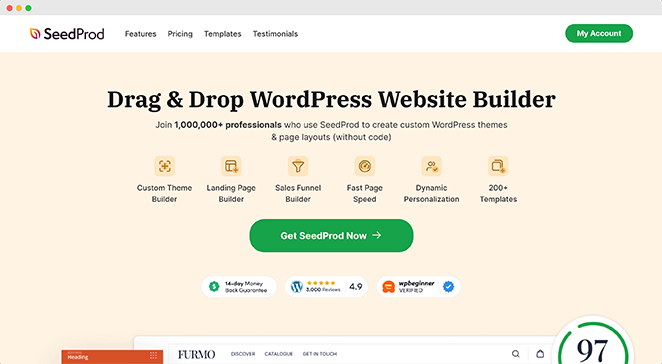
SeedProd is the best drag-and-drop WordPress website builder, powering over 1 million websites. You can use it to create beautiful websites and landing pages in under 10 minutes. And the best part is you won’t need to write a single line of code.
Just install the plugin, choose a thank you page template, and customize it with the visual editor.
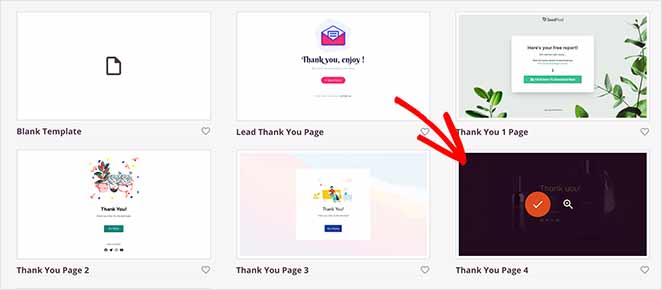
For all the steps, see my guide on how to set up a thank you page in WordPress.
When customizing your thank you page, add a button users can click to download the lead magnet. Simply drag the button block from the left-hand panel and drop it onto the page.
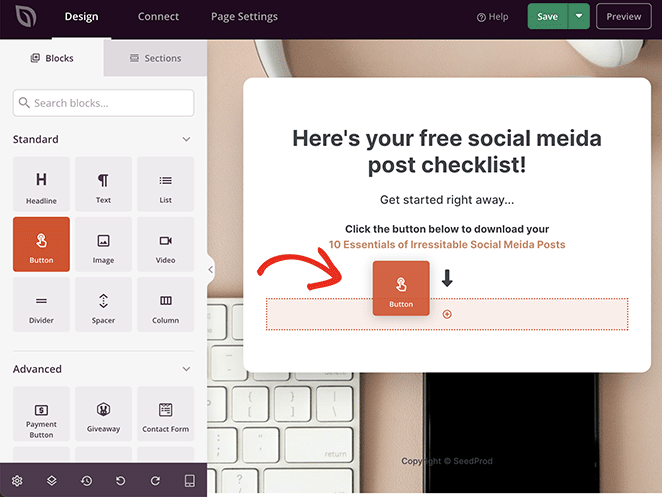
Now open the button block settings and find the “Link” field. Here, paste the file URL you copied earlier (from the media library|) and save your changes.
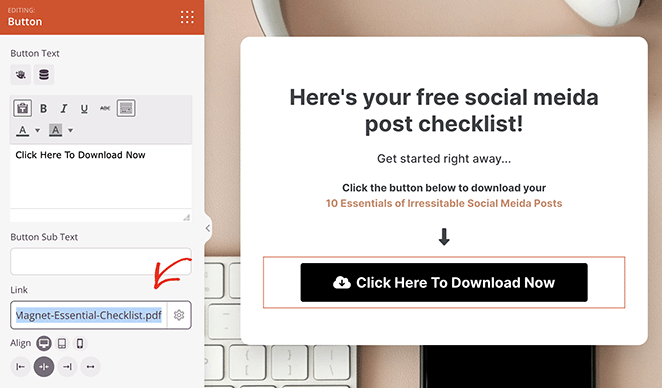
It’s also vital to ensure people can’t find your thank you page in search engines. Since SeedProd integrates seamlessly with AIOSEO, it only takes a few clicks to do this.
Simply click the Page Settings tab at the top of the page builder and select SEO.
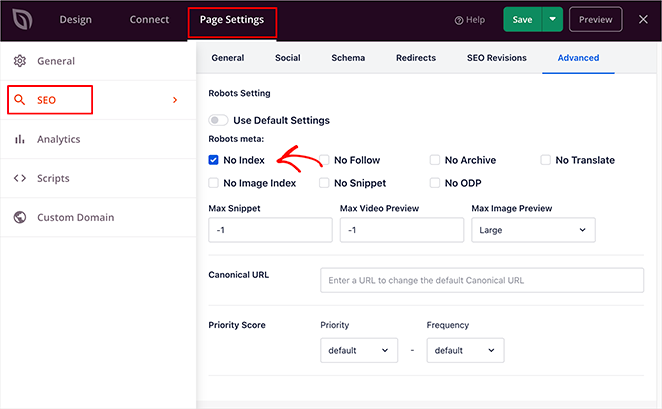
Then, in the right-hand panel, click Advanced, un-toggle “Use Default Settings,” and click the “No-index” checkbox.
Finally, click the save button and select Publish.
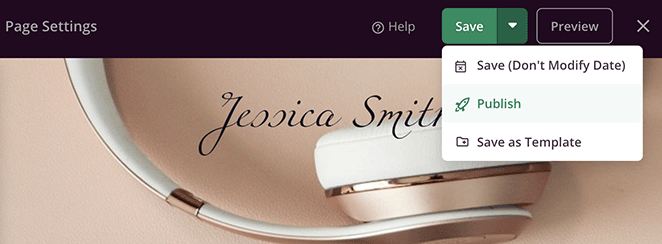
Now, when people are directed to this page, they can click the button and go directly to your PDF file. But to get your thank you page, they need a place to sign up. This is what we’ll tackle next.
Step 6. Build Your Lead Magnet Landing Page
A lead magnet landing page is a dedicated page where you can promote your lead magnet and capture leads. It typically has an opt-in form that encourages visitors to enter an email address to download the free file.
With SeedProd, you can build beautiful, high-converting landing pages like the one you used for your thank you page.
Start with a landing page template from the library. To increase signups, look for designs that feature opt-in forms like the Squeeze page templates.
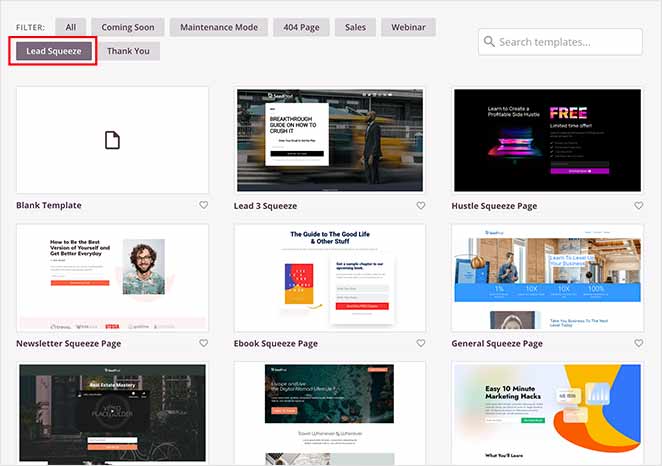
Then, customize the page to match your branding. You can even upload a photo of your lead magnet to encourage excitement and preview what subscribers will get.
For a complete walk-through, please see my guide on how to create a lead capture page in WordPress.
If you chose a template without a sign-up form, you can drag and drop the Opt-in Form block onto your page. Then, customize the fields (usually, just name and email are enough) and write copy to entice signups.
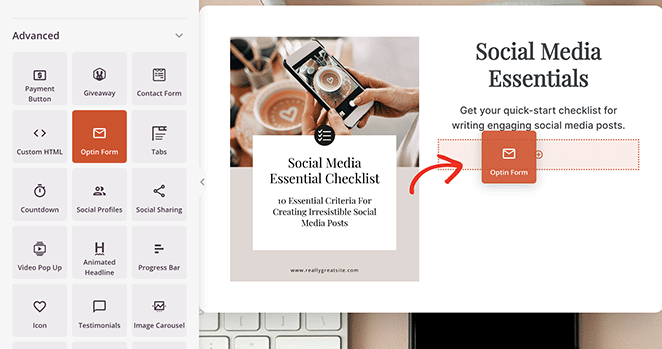
When your form is ready, open the opt-in form block settings and find the “Success Action” heading. Here, click the “Action to Take” dropdown and select the “Redirect” option.
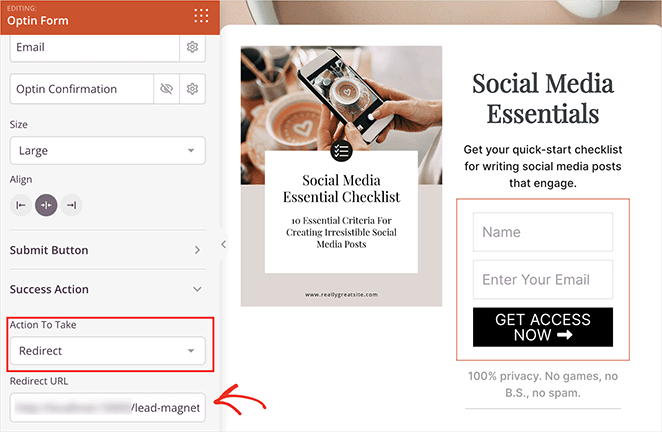
Now paste the URL of the thank you page you created earlier. This ensures that people get the lead magnet instantly after signing up.
Before publishing your page, integrate your form with your email marketing service to automatically add new subscribers to your list. SeedProd makes this super easy with its built-in integrations.
Simply click Connect at the top of the builder, find your preferred email marketing integration, and then follow the on-screen instructions to link your account.
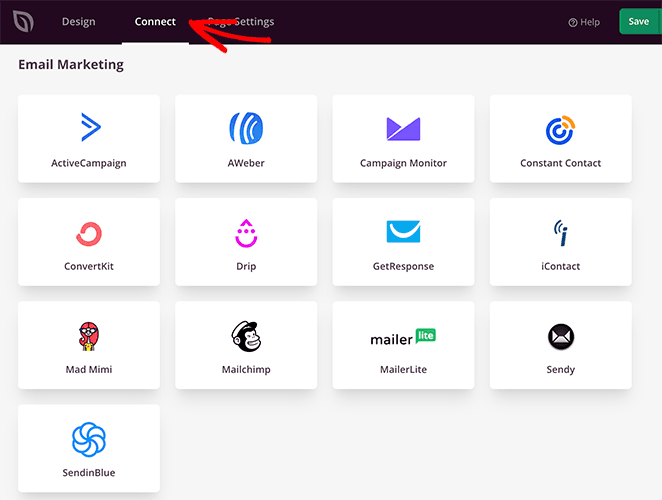
Instructions for each email marketing service are in SeedProd’s email integration documentation.
Finally, when you’re happy with your lead magnet landing page, click save, then Publish.
Now that it’s live, I recommend completing the sign-up steps yourself to ensure everything works correctly.
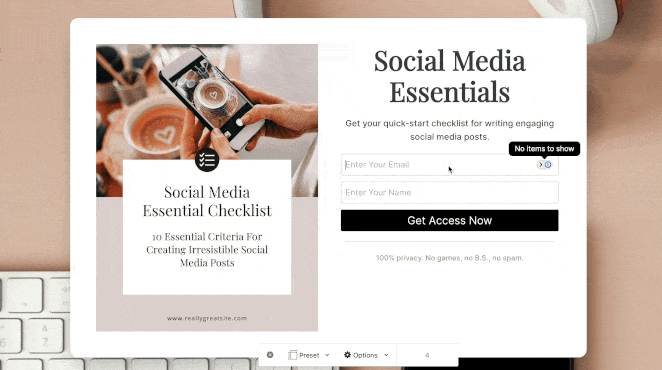
And that’s it. With a few clicks, you’ve created a powerful landing page to promote your lead magnet and grow your email list.
Step 7. Spread the Word About Your Lead Magnet
You’ve worked hard to create a valuable lead magnet; now, it’s time to ensure the right people see it.
Start by promoting it across all your social media channels. Create eye-catching graphics and write engaging captions highlighting its value for Facebook, Twitter, and Instagram. Be bold and tease some of the content to spark curiosity.
Next, consider using a popup plugin like OptinMonster to display targeted messages promoting your lead magnet. Exit-intent popups, which appear as a visitor is about to leave your site, are particularly effective for catching those who might have otherwise missed it.
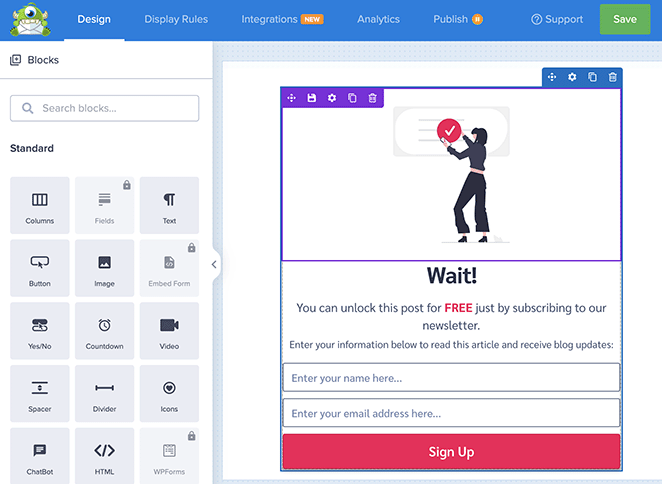
Of course, don’t forget about your existing audience. Include your new lead magnet in your next newsletter to announce it to your email subscribers.
Finally, consider the power of search engine optimization (SEO) and blogging. Write informative blog posts related to your lead magnet’s topic. Naturally, include a call to action that encourages readers to download it.
Optimize these posts and your lead magnet landing page for relevant keywords. This will help people searching for information on that topic find you organically through search engines.
Real-Life Examples of Lead Magnets That Work
Sometimes, the best inspiration comes from seeing what’s already working for others. Check out these great lead magnet examples from well-known online businesses:
OptinMonster
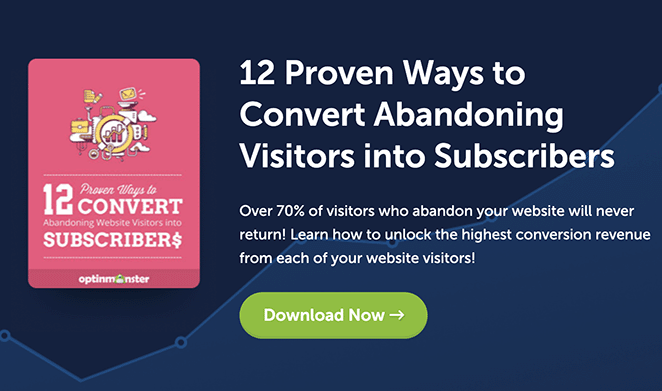
OptinMonster, a leading lead generation platform, knows its audience is all about email marketing. That’s why it offers a free resource with actionable tips to reduce abandonment on your website.
I love how the CTA is positioned at the end of OptinMonster’s blog post. This is the perfect way to capture leads right when users are looking to take their next steps.
NP Digital
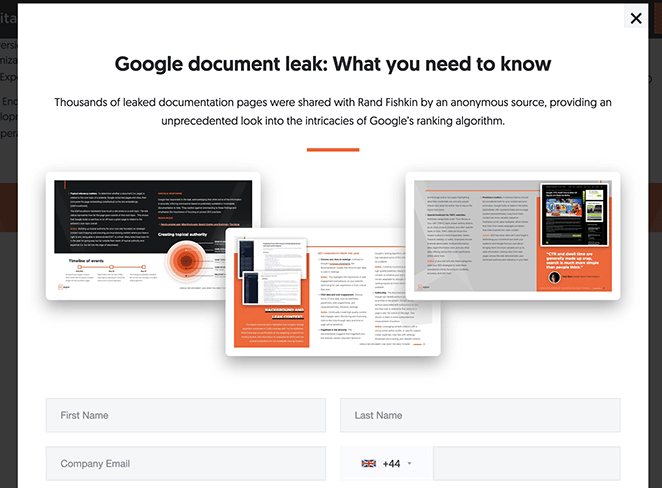
Neil Patel, a leading voice in digital marketing, brilliantly plays on his audience’s fear of missing industry information. His lead magnet is a popup offering a “Google Document Leak Report.” It’s a clever way to tap into curiosity and position himself as having exclusive insights.
Smart Business Revolution
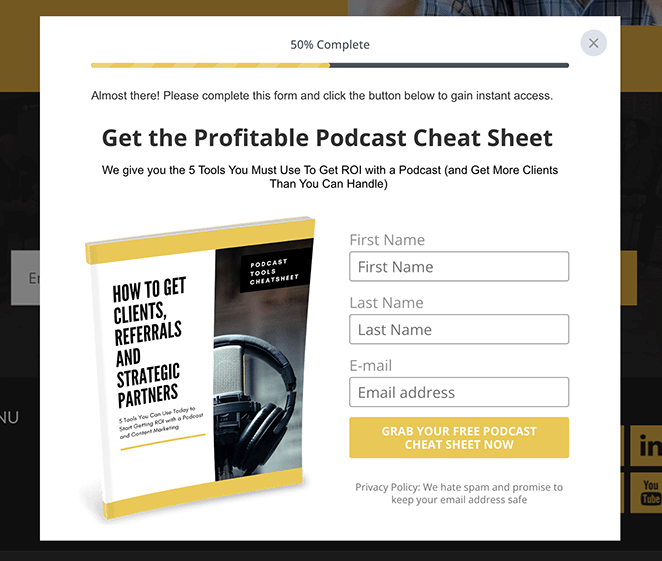
John Corcoran, host of the Smart Business Revolution podcast, knows his listeners want to create profitable podcasts. That’s why he offers his cheatsheet for free.
This resource provides aspiring podcasters with tips for growing their audience and generating income, helping them realize their podcasting dreams.
Rick Mulready

Recognizing the growing interest in AI, Facebook ads expert Rick Mulready offers a timely and valuable resource: a free “ChatGPT Cheat Sheet.” This guide provides an, easy-to-understand overview of how to use ChatGPT effectively.
By offering this, Mulready attracts an audience eager to explore and leverage this popular AI tool.
Syed Balkhi
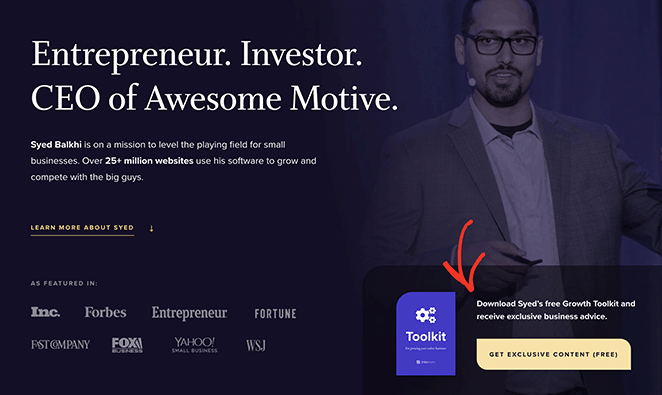
Syed Balkhi, entrepreneur and founder of WPBeginner, knows his audience is always looking for growth strategies. He offers a “Growth Toolkit” with resources to help them succeed. This highly targeted lead magnet provides tools and insights directly relevant to his audience’s goals.
These examples show the importance of tailoring your lead magnet to a specific audience and offering something valuable related to your brand’s expertise. Let them inspire you as you brainstorm ideas for your own lead magnets.
Create Your Lead Magnet Today
You now know how to create a lead magnet that will turn casual visitors into engaged subscribers. You’ve learned how to:
- Identify your target audience and their pain points.
- Choose the right format for your lead magnet.
- Create high-quality, valuable content.
- Design an eye-catching and professional-looking resource.
- Set it up in WordPress and promote it effectively.
So, what are you waiting for? Start brainstorming those lead magnet ideas and watch your email list grow.
Ready to build beautiful landing pages that convert?
Thanks for reading! We’d love to hear your thoughts, so please feel free to leave a comment with any questions and feedback.
You can also follow us on YouTube, X (formerly Twitter), and Facebook for more helpful content to grow your business.






